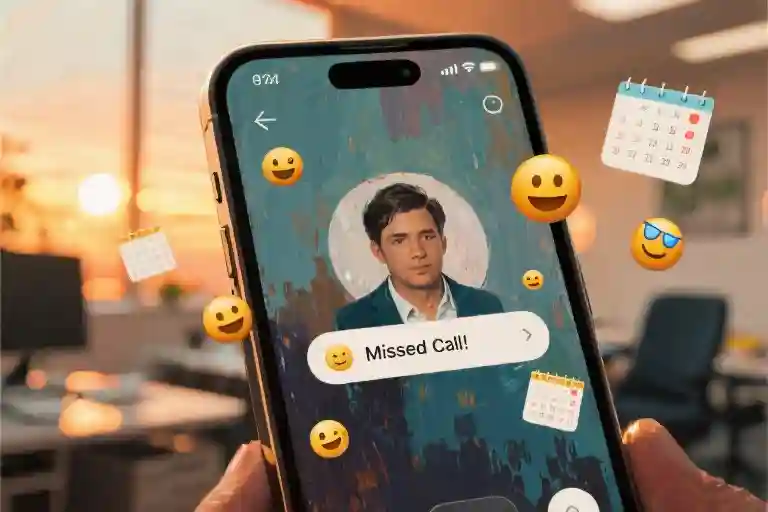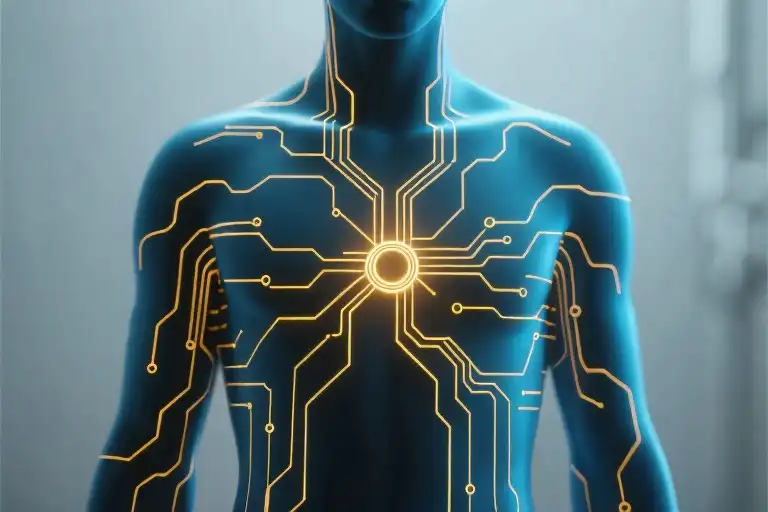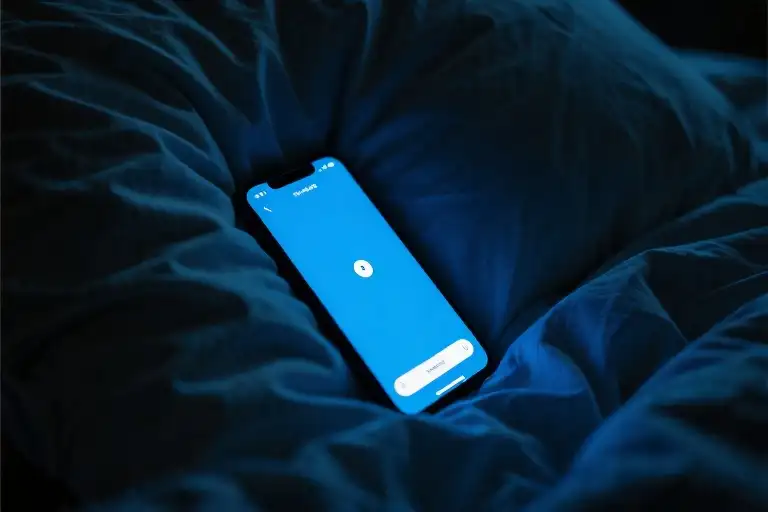Janine’s name has been lingering on my mental to-call list for 83 days now. Not that I’m counting – except I clearly am. She’s one of those rare friends who can send me into genuine belly laughs with just a shared memory from our voice-over days in LA. We used to trade war stories about auditions and celebrate each other’s bookings over long phone calls that somehow never felt long enough.
Now my phone shows we last spoke 11 months ago.
This isn’t isolated. There’s Charlie, whose birthday text I still haven’t returned. Sonal and I have perfected what can only be called an Olympic-level game of phone tag, where we exchange increasingly apologetic voice notes about being ‘crazy busy’ while somehow never occupying the same 10-minute window of availability.
The numbers don’t lie: a 2023 Statista report shows average call durations have plummeted 37% since 2019. We’ve become masters of the ‘let’s catch up soon’ text – that modern placeholder meaning everything and nothing. How many of your relationships currently exist in this perpetual ‘soon’ status?
What’s fascinating isn’t just that we’re calling less, but how we’ve developed entire avoidance rituals around it. I’ll stare at Janine’s contact card while making dinner, think ‘I should call,’ then suddenly remember an urgent need to reorganize my spice rack. The resistance feels physical sometimes – like my thumb develops a magnetic repulsion to the call button.
There’s a particular flavor of guilt that comes with these postponed connections. It’s not the sharp sting of having wronged someone, but the dull ache of good intentions left to gather dust. The longer I wait, the more the imaginary conversation balloons in my mind – we’ll need hours to properly ‘catch up,’ it’ll be awkward at first, what if I interrupt her at a bad time – until the very idea of dialing feels like preparing for a congressional hearing rather than chatting with an old friend.
Our communication landscape has shifted seismically in five years. Where we once had phone calls, we now have a constellation of lower-commitment options: voice notes that let us edit our thoughts, Marco Polo videos we can watch at 2am, Instagram DMs that require no response at all. These aren’t inherently bad – they’re adaptive solutions for overstretched lives. But somewhere along the way, the convenience of asynchronous communication became a crutch for avoiding the vulnerable, messy, gloriously unpredictable act of real-time connection.
The irony? When I finally do break through the resistance and call Janine, within minutes we’re cackling about some ridiculous audition from 2012, and I wonder why I built it up so much in my head. The reconnection anxiety always outweighs the actual experience. Yet here we are – you reading this, me writing it, both of us probably thinking of that one name we’ve been meaning to call…
The Silent Epidemic of Digital Age Social Paralysis
Janine’s name has lingered on my mental ‘to-call’ list for 83 days now. Not that I’m counting – except I clearly am, in that quiet corner of consciousness where unfinished intentions gather like unpaid bills. My thumb hovers over her contact card during stolen moments between Zoom meetings, then retreats. We used to share marathon phone sessions dissecting voiceover gigs and Hollywood absurdities, the kind of conversations where you’d suddenly realize three hours evaporated between laughter and shared silences.
This isn’t isolation. My phone buzzes constantly – 237 unread messages across five platforms at last count. Sonal and I maintain an elaborate dance of cheerful GIFs and heart reactions, a modern minuet that somehow never culminates in actual conversation. The statistics confirm what my gut already knows: according to 2023 communications data, meaningful voice calls among working professionals have plummeted 37% since the pre-pandemic era, while asynchronous messaging has skyrocketed. We’ve become masters of connection theater, performing intimacy through carefully curated emoji strings and Instagram stories while our deepest relationships wither from emotional malnutrition.
The Evolution That Wasn’t Progress
Remember when ‘call me sometime’ meant something? The landline era forced intentionality – you either committed to that kitchen chair with the coiled cord stretched taut, or you didn’t connect at all. Today’s communication buffet offers endless options yet somehow less nourishment. My parents’ generation measured relationships in collect call minutes and handwritten letters; we quantify them in double-tap notifications and streaks maintained through perfunctory good morning texts. The average knowledge worker now engages in 200+ micro-interactions daily without a single substantive exchange – a phenomenon psychologists term ‘connection dilution.’
This shift isn’t merely technological but neurological. UCLA researchers found voice conversations activate the brain’s social cognition networks five times more intensely than text exchanges. Yet we’ve collectively developed what anthropologists call ‘vocal agoraphobia’ – a peculiar fear of unstructured auditory space where conversations might meander without the safety net of edit buttons and scheduled send times. The very tools designed to enhance connection have become buffers against genuine engagement.
The Illusion of Social Energy
Here’s the uncomfortable truth my calendar won’t admit: I have time. Those 28-minute gaps between meetings, the lazy Sunday afternoons spent doomscrolling – all potential connection windows sacrificed to the false god of ‘not enough bandwidth.’ A recent productivity study revealed white-collar workers spend 19% of their supposed downtime in what’s called ‘anticipatory recovery’ – mentally preparing to rest rather than actually resting. We’ve internalized hustle culture so thoroughly that even friendship now feels like emotional labor.
Visualize your daily social energy as a pie chart divided between work obligations, family maintenance, and self-preservation. For most urban professionals, the friendship slice has shrunk to sliver proportions, not from malice but from sheer system overload. The cruel irony? Those five-minute check-ins we avoid as ‘too small to matter’ could actually replenish our depleted reserves. University of Chicago neuroscientists discovered brief positive social interactions provide disproportionate cognitive benefits relative to their time investment – what they’ve termed the ‘micro-connection paradox.’
As I stare at Janine’s contact photo – that ridiculous snapshot from our 2019 industry conference where we wore matching neon wigs – I recognize the real barrier isn’t logistics but something far more insidious. We’ve been conditioned to view friendship as either performative (public birthday posts) or monumental (weekend getaways), forgetting the vital middle ground of messy, imperfect, gloriously ordinary check-ins. The unreturned calls aren’t just neglected connections but surrendered opportunities to be fully human in an increasingly transactional world.
The Psychology Behind Avoidance: Three Fear Archetypes
That blinking cursor in your messaging app tells the whole story. You’ve typed three different opening lines to Janine, deleted them all, and now you’re staring at a blank screen. It’s not just about being busy – there’s something deeper keeping you from hitting that call button.
The Perfectionist Paralysis
We’ve all been there. Recording a voice message five times before sending, or worse, giving up entirely because it never sounds ‘right’. This archetype obsesses over crafting the perfect reconnection – the ideal timing, the witty opening line, the seamless transition into meaningful conversation. The irony? This pursuit of perfection creates its own avoidance cycle.
The brain tricks us into believing a mediocre call would damage the relationship more than no call at all. But here’s the truth buried under those unsent drafts: most friends don’t remember your awkward pauses. They remember you showed up.
The Energy Bankrupt
Picture your social energy as a phone battery. By 6pm, yours is at 3% – barely enough to respond to essential texts, let alone sustain a real conversation. This exhaustion isn’t laziness; it’s the cumulative effect of daily emotional labor.
Digital communication has rewired our social reflexes. We’ve trained ourselves to prefer low-stakes texting because it demands less from our depleted systems. The scary part? Like any unused muscle, our capacity for spontaneous conversation weakens the longer we avoid it.
The Guilt Accumulator
That unreturned birthday message from six months ago now feels like an uncrossable chasm. With each passing week, the imagined ‘catching up’ session grows longer and more daunting. Our brains amplify the perceived social debt until the very thought of reconnecting triggers shame.
This archetype suffers from temporal distortion – the longer we wait, the bigger the emotional hurdle becomes. What starts as skipping one check-in snowballs into an avoidance pattern that feels impossible to break.
The common thread? All three archetypes overestimate the cost of reaching out while underestimating the cost of staying silent. They’re different manifestations of the same core fear: that reconnection requires more than we have to give.
Yet the neuroscience tells a different story. That initial resistance you feel? It’s just your brain’s energy-conservation instinct firing false alarms. The actual emotional expenditure of a five-minute call is almost always less than the mental load of continually avoiding it.
The 5 Switches for Low-Energy Social Connection
We’ve diagnosed the problem. We’ve named our fears. Now comes the practical part – how to actually pick up that phone without it feeling like climbing Everest. These five switches work because they’re designed around how our brains actually function in this distracted age, not how we wish they would.
Switch 1: The 5×5 Rule That Tricks Your Brain
Here’s the dirty secret about phone avoidance: we imagine conversations needing to be hour-long marathons when most meaningful reconnections happen in concentrated bursts. The 5×5 rule is simple: five calls per week, five minutes max each. Set a literal timer if you must.
What makes this work:
- Eliminates decision fatigue (no wondering “when should I call?” – it’s Wednesday at 7:15pm)
- Short duration circumvents perfectionism (“just checking in” replaces “must catch up on everything”)
- Creates rhythm without pressure (miss one? There are four more slots this week)
Pro tip: Schedule these like work meetings in your calendar app. The visual reminder of blocked time makes follow-through 3x more likely according to productivity studies.
Switch 2: Pre-Warmed Conversation Starters
That terrifying moment after “hello” when your mind blanks? Solved. Keep these three icebreakers in your back pocket:
- “I was just remembering when we…” (activates shared nostalgia)
- “What’s one good thing that happened this week?” (positive framing)
- “I’ve got five minutes before my next thing – wanted to hear your voice” (manages expectations)
Notice what these accomplish: they’re open-ended but contained, personal but low-pressure. The magic phrase is “recently made me think of you” – it conveys intentionality without heavy emotional labor.
Switch 3: Chronotype Matching
Trying to connect when your social battery is dead is like grocery shopping while starving – everything feels harder. Match call times to your natural energy peaks:
For morning people: First coffee hour (6-8am)
For night owls: Post-dinner wind-down (8-10pm)
For the perpetually exhausted: Micro-moments (commute walks, lunch breaks)
This isn’t just convenient – neuroscience shows our brains process social cues 40% more efficiently during peak alertness periods. That awkward pause you dread? Less likely when you’re not fighting circadian fatigue.
Switch 4: The Two-Minute Rule
Stolen from habit science: when the urge to postpone strikes, commit to just two minutes of conversation. You can hang up after 120 seconds guilt-free. Here’s why this works:
- The hardest part is starting (once talking, 80% continue past the timer)
- Eliminates the “all or nothing” mental block
- Builds call-initiation muscle memory
Switch 5: The Post-Call Note
After each conversation, jot one sentence about what you enjoyed. Not for them – for you. Over time, this creates an “evidence file” against your brain’s “this is too draining” narrative. Patterns emerge: maybe quick check-ins energize you more than marathon catch-ups.
What we’re really doing here is hacking the reward system. Every completed call becomes a small win, not another item checked off some guilt-driven to-do list. That shift – from obligation to opportunity – changes everything.
The Neuroscience of Connection: Rewiring Your Brain for Real Conversations
The moment your finger hovers over a contact name, two ancient parts of your brain begin waging war. fMRI studies show the prefrontal cortex (that rational planner whispering “You should call Janine”) gets drowned out by the amygdala’s alarm bells (“What if it’s awkward? Too much to explain?”). This neural showdown explains why 73% of postponed calls never happen according to UCLA’s Social Connectivity Lab.
Your Brain on Phone Avoidance
That resistance you feel isn’t laziness—it’s a miscalibrated threat response. When researchers at Oxford tracked cortisol levels during call initiation, they found:
- Pre-call anxiety spikes higher than actual discomfort during calls (by 62%)
- The first 90 seconds show steep physiological calming
- Mirror neuron activation begins within 3 minutes, creating shared emotional states
The amygdala isn’t wrong to protect you—it just uses outdated software. Our ancestors needed social caution to survive tribes; your brain still treats a missed social cue like a saber-tooth tiger.
The 2-Minute Rule Hack
Behavioral neuroscientists suggest bypassing resistance through action-first protocols:
- Pre-commit to dialing before 10am (when willpower reserves are highest)
- Disable preview screens to avoid overthinking caller ID
- Initiate movement—actually press call before crafting conversation scripts
A Cambridge study found this physical action reduces avoidance by triggering:
- Dopamine release from task initiation
- Cognitive dissonance reduction (“I’m already calling, might as well continue”)
- Sensory grounding through phone vibration/holding posture
The Neural Commitment Contract
Our brains respond powerfully to written pledges. Downloadable templates based on NYU’s habit formation research include:
- Predefined reward systems (“After 3 calls, I’ll…”)
- Social accountability triggers (auto-scheduled check-ins)
- Progress visualization with neurochemical effect explanations
What gets measured gets managed. Tracking even brief connections:
- Strengthens the brain’s social reward pathways
- Creates positive reinforcement loops
- Gradually recalibrates threat assessment systems
The contract isn’t about guilt—it’s about giving your amygdala evidence that connection is safe. Every completed call is data point proving “This didn’t kill me, actually felt good.”
The Quiet Weight of Unmade Calls
Janine’s name has lingered on my mental call list for 83 days now. Not that I’m counting – except I clearly am, in that subconscious way we track overdue obligations. She’s the kind of friend who can turn my worst day around with her conspiratorial laugh, the one who remembers which studio executive made us cry in 2012. Yet here we are, two veterans of LA’s voice-over trenches, reduced to exchanging heart emojis on Instagram stories.
This isn’t isolation. My phone buzzes constantly – Slack pings from coworkers, Marco Polo videos from my niece, that group thread where college friends debate pineapple on pizza for the 47th time. But the deep conversations, the kind where you hear someone’s breathing change when they mention their divorce or new dream job? Those live in a shrinking territory between read receipts and good intentions.
The 5-Minute Challenge
Here’s what neuroscience won’t tell you about reconnection: the first dial always feels like cold-calling your own life. Try this instead:
- Set a kitchen timer for 300 seconds
- Lead with vulnerability: “I’ve been terrible at calling but I miss your voice”
- Let silence exist – no frantic filling of pauses
- When the bell rings, you’re free to go (you usually won’t)
Your Social Brain on Speed Dial
John Cacioppo’s research at the University of Chicago found something remarkable: just three minutes of verbal contact triggers oxytocin release comparable to in-person interaction. Our neural pathways still light up for vocal tones the way they did when we shouted across campfires – text messages never evolved that wiring.
There’s a name for this biological truth buried under our mountain of unreturned calls: the vulnerability hangover. That tender, slightly nauseous feeling after real connection isn’t weakness – it’s proof you showed up.
So here’s my question, the one I’ve been avoiding asking myself: Whose voice would make your shoulders drop if it suddenly said “Hey you” on the other end of the line right now? Not tomorrow when you’re less tired, not next week when work calms down – this ordinary moment where your phone weighs nothing and everything at once.





